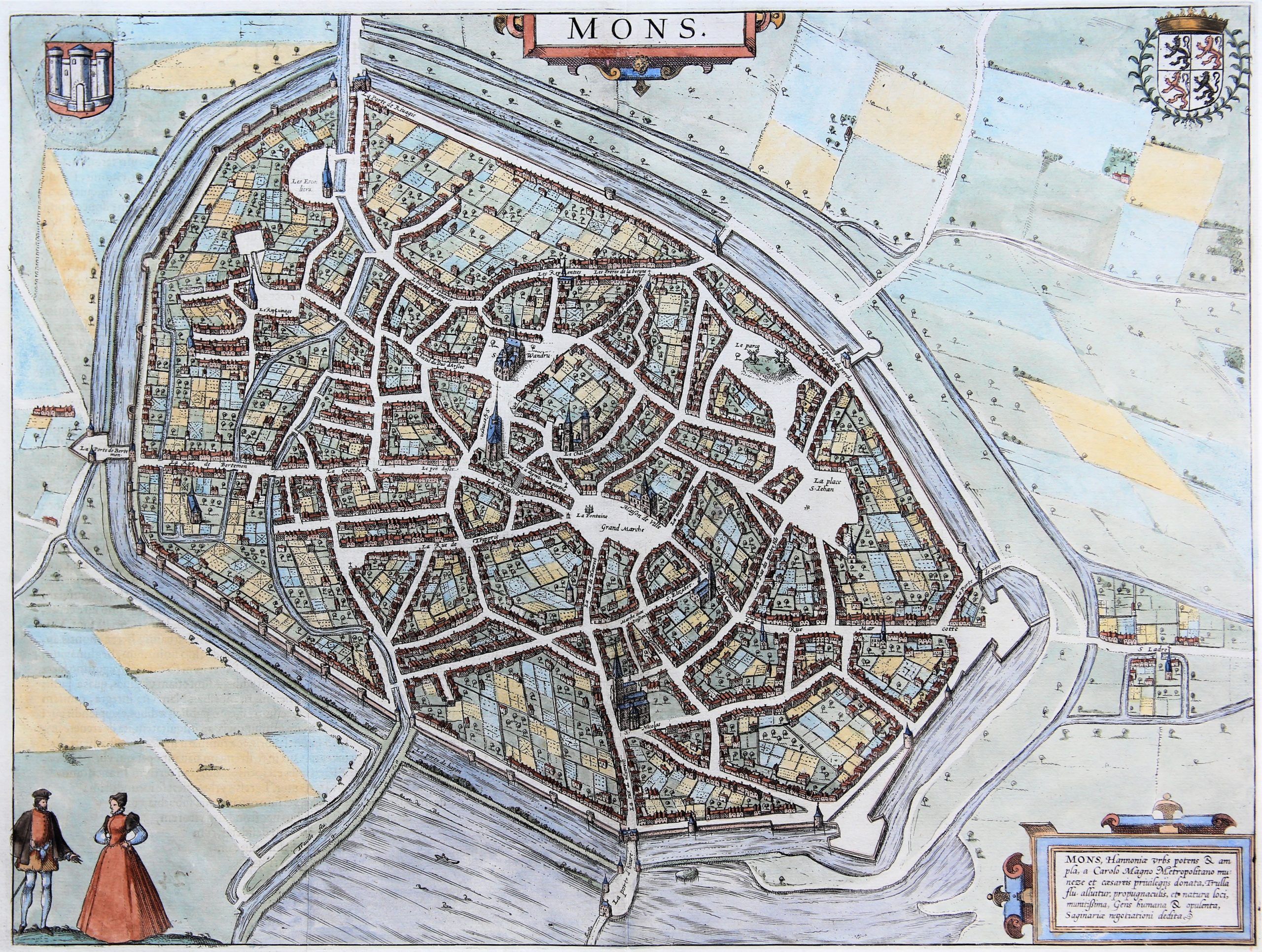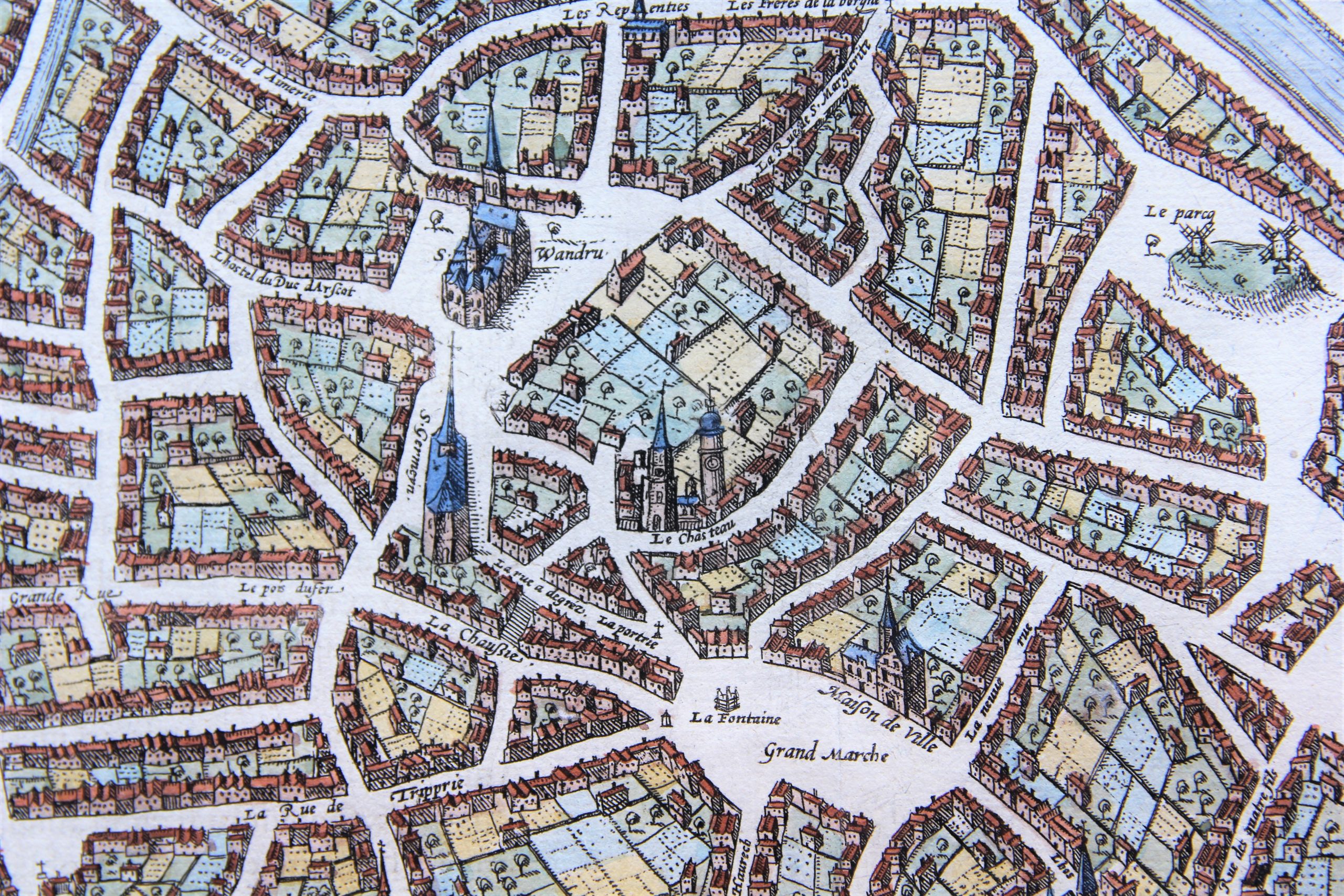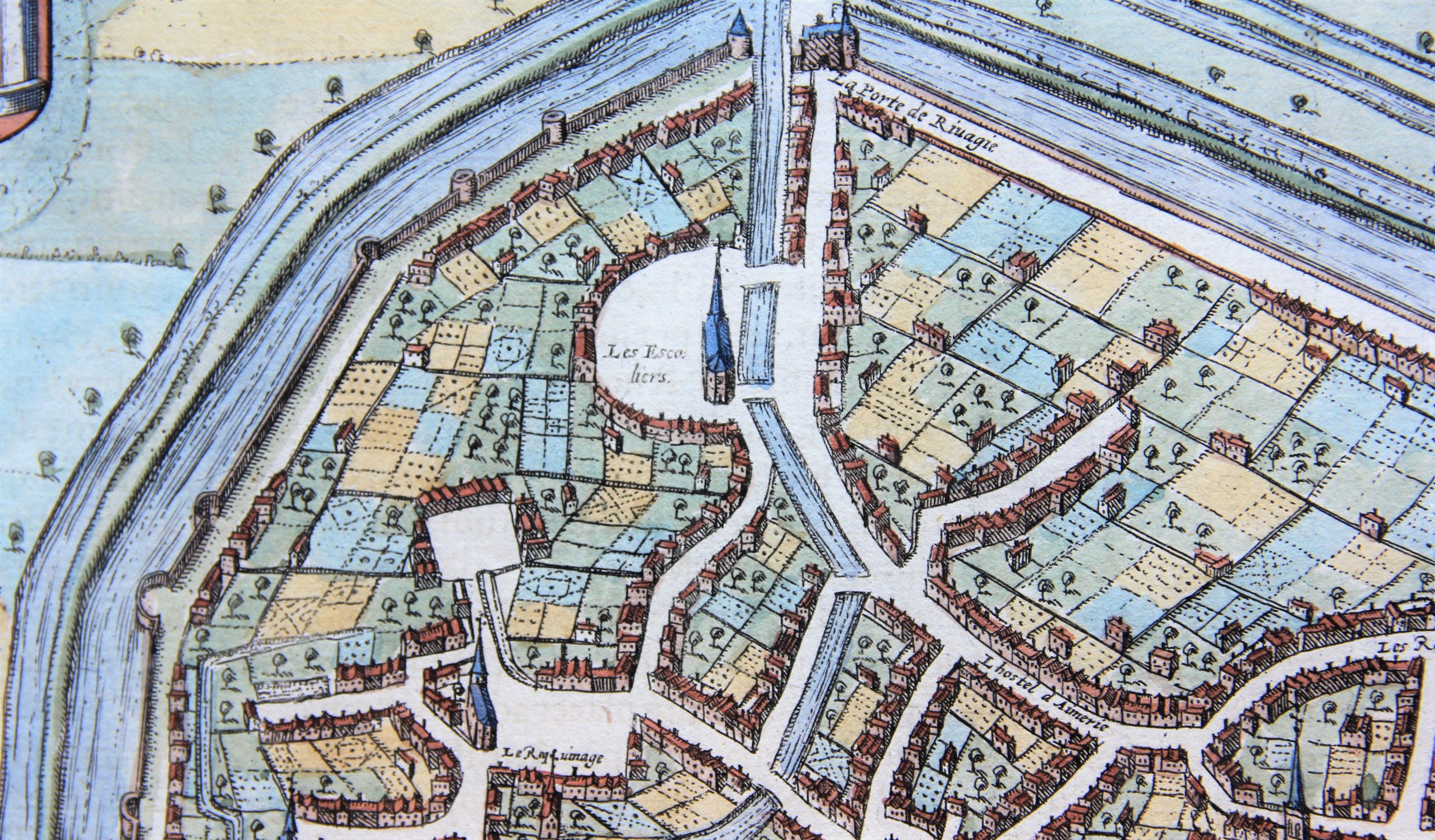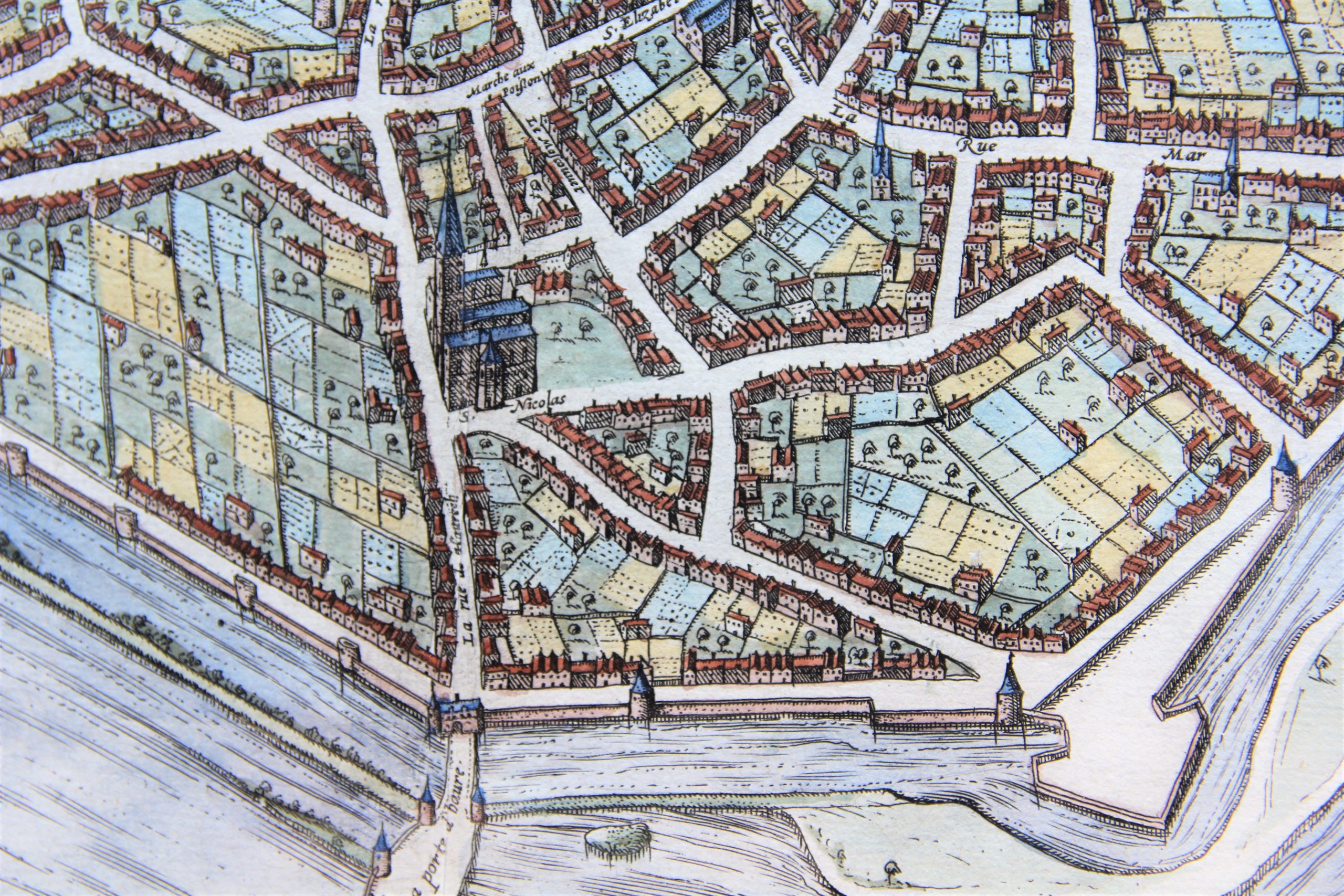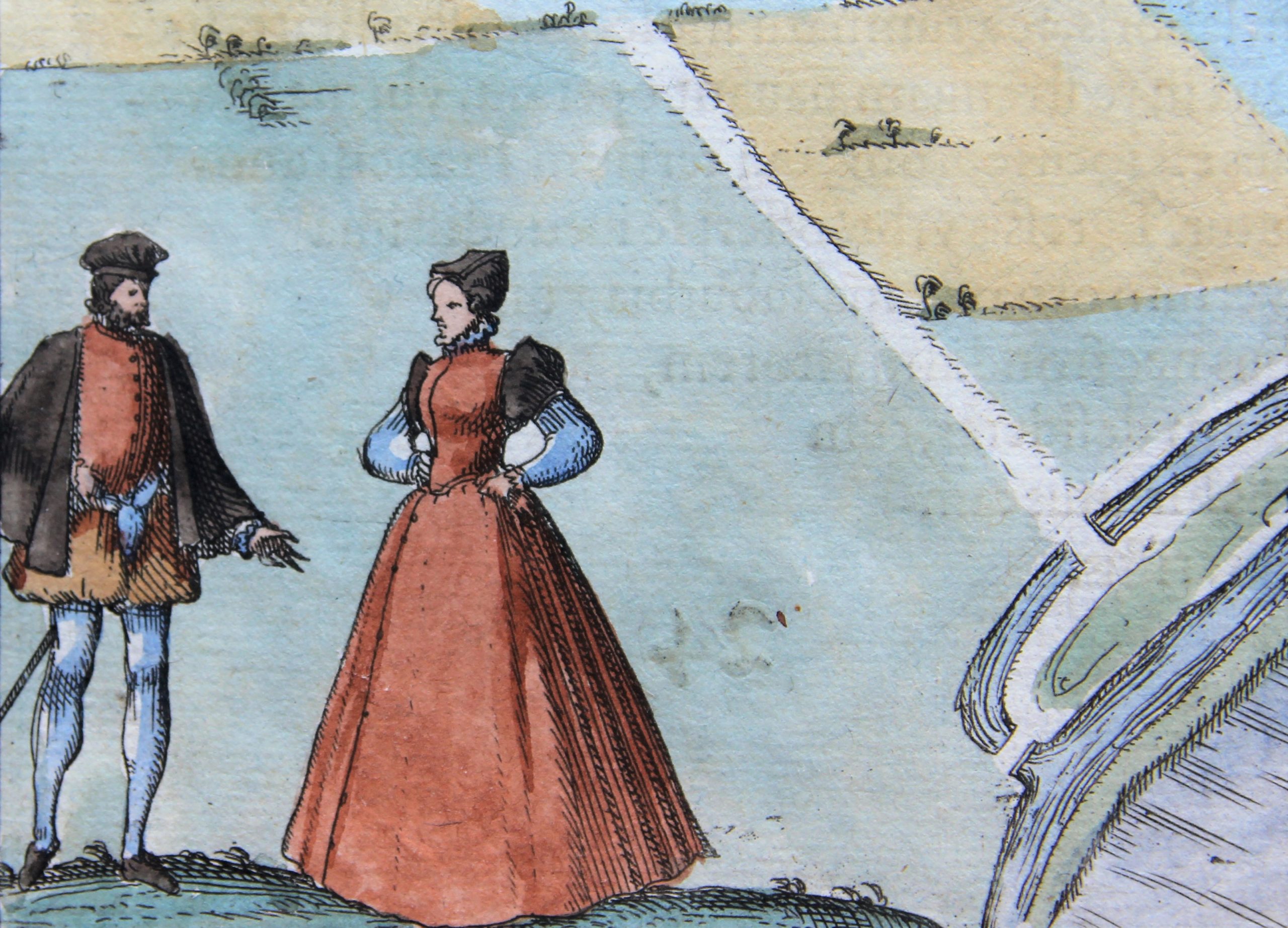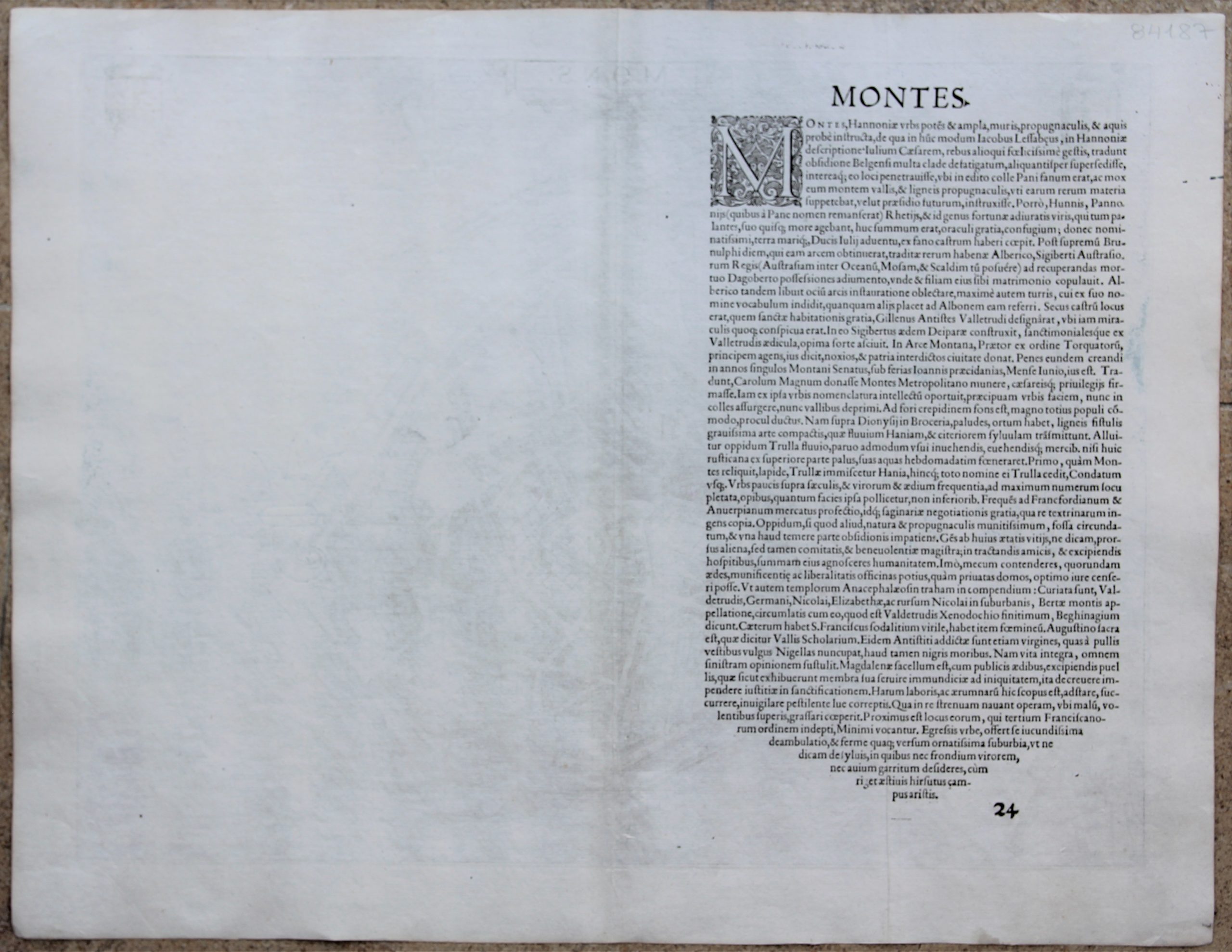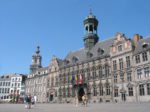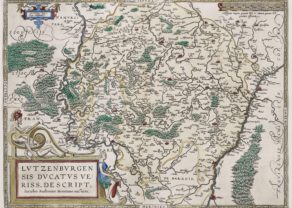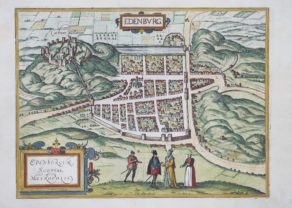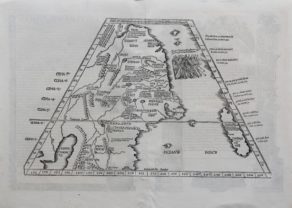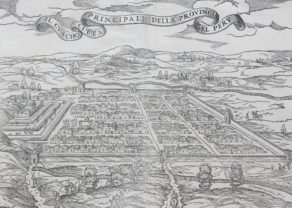Mons
Detail
Date of first edition: 1581
Date of this map: 1581
Dimensions (not including margins): 34,6 x 45,7 cm
Dimensions (including margins): 40,2 x 51,5 cm
Condition: Very good. Strong paper with minor browning. Wide margins. Centre fold as published. Nice old colouring.
Condition rating: A
Verso: text in Latin
Map references: Van der Krogt IV, 2817, state 1 (second state misses local people in bottom left corner); Fauser, #9042; Taschen, Br. Hog., p.231.
From: Civitates Orbis Terrarum, Vol. III. Van der Krogt IV, 41:1-3
In stock
Mons commented by Braun
“It is said that Emperor Charlemagne made Mons his capital and granted it imperial privileges. And he is supposed to have taken its name from its setting, which is namely hilly. Mons has grown substantially in numbers of inhabitants and in buildings in a short space of time.
From here, a lively trade is conducted with Frankfurt and Antwerp, above all is a sort of cloth that they call Saye and which is made in the many weaving workshops here. Thanks to its natural setting and its fortifications, it is an extremely secure city, surrounded on all sides by a moat and hence not easy to besiege.”
TRANSLATION OF CARTOUCHE TEXT: Mons, the powerful and wealthy city in Hainaut, was endowed with imperial privileges by Charlemagne and the River Trulla flows around it; it is well protected by its fortifications and natural setting; the civilised and affluent population trades mostly in livestock.
Taschen on Mons
The city of Mons lies on a slight hill beside the River Haine southwest of Brussels. Its surrounding moat and well-fortified ramparts are clearly recognisable. Mons dates back to Roman times, when Caesar erected a military camp on one of its hills during the Gallic Wars. The historical centre gradually spread outwards around a monastery founded in the 7th century by the city’s patron saint, Waltrude of Mons.
To protect Mons from attack, the Count of Hainaut had a castle erected on top of the hill. Rising from the middle of an open square left of centre is the church of Sainte-Waudru; below it, at the centre of the city, lies the main marketplace with the town hall. Emphasis fall upon the fields and meadows surrounding the city, in reference to the productive local farming and livestock industries.
Another sphere of economic activity was weaving; amongst the textiles manufactured in Mons was the famous green Saye, a woollen cloth that derived its name from southern England.
Mons, capital of the province of Hainaut, is not the largest city of the province (which is Charleroi), but it might be the nicest town of the province to visit.
Related items
-
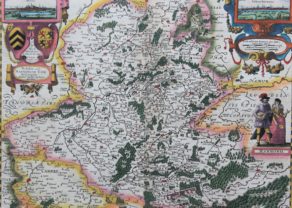
Hainaut – Nobilis Hannoniae Com Descriptio
by Petrus KaeriusPrice (without VAT, possibly to be added): €2 100,00 / $2 331,00 / £1 869,00With two inset views of the towns “Mons” and “Valenchiennes” and costumed figures: “Hannonii”.
-
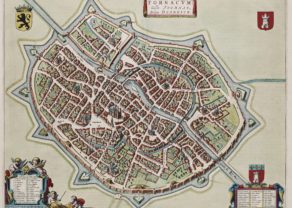
Tournai – Tornacum Gallis Toutnay, Belgis Doornick
by Joan Blaeu -

Namur – Namurcum
by Abraham OrteliusPrice (without VAT, possibly to be added): €800,00 / $888,00 / £712,00
